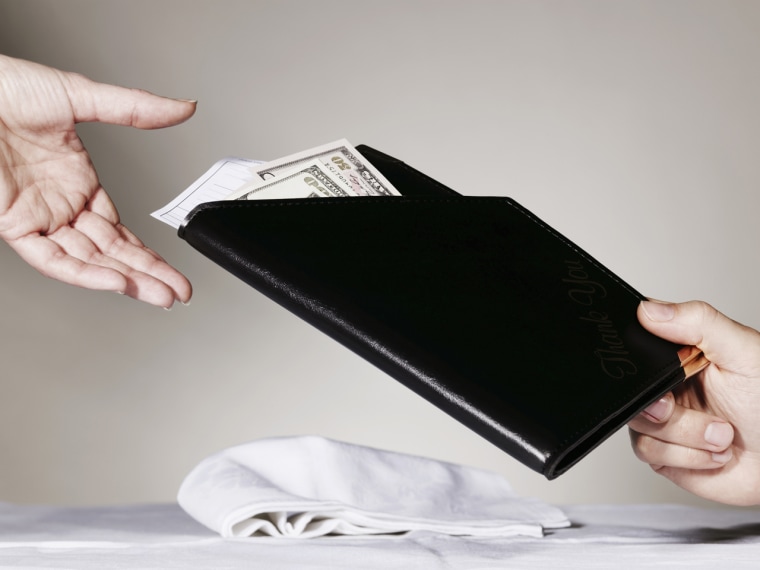It’s a question we all face – what’s a reasonable tip for your waiter? After all, the last thing you want is to get on the bad side of the person who handles your food.
According to the New York Post, tips may be adding a bigger chunk to your bill. Waiters in Manhattan now want a 25 percent tip, and some New York City restaurants that print “suggested gratuities” even present 30 percent as an option, the paper reports.
It’s not just wishful thinking – waiters are starting to get it. A study by Cornell University consumer behavior professor Michael Lynn, who examined 9,000 credit card receipts from a Poughkeepsie, N.Y. restaurant, found that more than a third of diners left tips greater than 20 percent.
The latest rise in percentage, a phenomenon that author Steve Dublanica dubbed “tip creep,” may only be limited to New York, however. A thread on Chowhound.com suggests that 20 percent is standard, although some gourmands are willing to pay 25 percent or even more for exceptional service, and knock gratuity down to 15 percent for sub-par attendance.
The 20 percent standard seems to apply to most places in the U.S., if the tipping threads on restaurant review site Yelp are representative. In threads from the Chicago, Boston, Los Angeles and D.C. Yelp. communities, most people said they tipped 15-20 percent, with a few people noting that they occasionally liked to tip more, at local places and places with cheaper food, if service was awesome, or because their own experiences waiting table helped them relate to their server.
Wait staff rely on tips, since tipped employees may be paid less, as low as $2.15 per hour according to federal law, although state law sometimes sets these minimum wages higher.
The phenomenon of tip creep has plagued restaurant-goers for generations. Over the last 94 years, the acceptable tip rate increased from 10 percent of the bill to 20 percent. In the late 1890s, the growing practice of restaurant tipping was a hot topic, with many customers strenuously objecting. Case in point, the reader who, in a November 1899 letter to the New York Times editor, dubbed the practice, “a species of blackmail.”
By 1918, tipping wasn’t blackmail, it was a standard 10 percent, according to a Sept. 1, 1918 article in the New York Times. Almost fifty years later, in 1965, another Times writer proclaimed, “most Americans are accustomed to tipping on the basis of 10 to 20 percent, with 15 percent being the most generally used figure.”
Nowadays, 15 percent isn’t an average tip – it’s a way of registering displeasure with the service.
And if the New York Post is right, the rate is flying higher than the current 20 percent. What do you usually tip for a meal? Would you go as high as 30 percent for great service?
Lizzie Stark lives in New Jersey and is the author of "Leaving Mundania." Though she's never waited tables herself, many of her friends have, so she never tips less than 18 percent.
More from TODAY Food:
